FRUITFUL FUTURES
Making the Best of It
Eek! Mice (or rabbits)! Not the animals but the damage they have wrought. The bark on virtually all my pear grafts of last year has been nibbled off enough to kill the grafts.
Once I calmed down, I realized that all was not lost. All the chewing was above ground level, leaving a small amount of intact bark still in place. The plants aren’t dead, just their portions above the chewing. The near-ground portions could be grafted again.
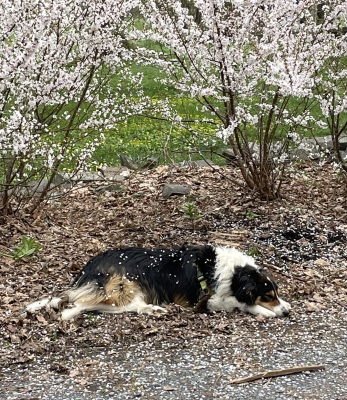
Daisy showered with petals (more on this later)
(Most fruit trees neither come true from seed nor root readily from cuttings, so are propagated by grafting a scion — a short length of one-year-old stem — of the desired variety onto a rootstock. The rootstock is the same kind of plant as the scion variety and could be a seedling or a variety developed for special rootstock purposes. My nibbled trees are pear trees, Highland, Blake’s Pride, and other varieties, each grafted on a rootstock named Old Home X Farmingdale 87, which dwarfs the trees’ final height to about half that of a full-size pear tree, as well as induces it to yield its first fruits sooner.)
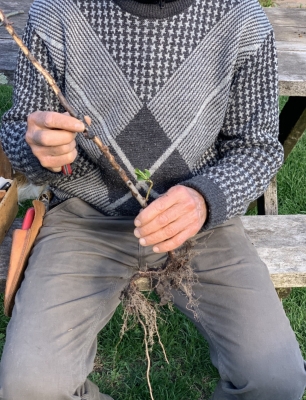
Damaged rootstock
Crouched way down at ground level would be a tough position for grafting, not to mention trying to keep dirt and debris off the cut surfaces. So I dug up each plant for “bench grafting,” so named because it’s done at a bench or, more generally, upright and in the comfort and better light of indoors.
My graft of choice for these wounded plants is the whip graft. It’s a simple graft, especially for apple and pear; I typically expect 95+ percent “takes.” With a well-honed, preferably straight-edged (and preferably single-bevelled) knife, I make a smooth, sloping cut about 3/4-inch long on the rootstock. Typically, I would make the cut longer but there’s not that much viable stem above-ground.

Making the cuts on rootstock and scion
Next, I take a scion of similar thickness to the rootstock, although this is not all-important, and make a similarly smooth, sloping 3/4-inch long cut.
If the cuts are secured face to face and then sealed against moisture loss, cells at the cuts start to multiply, eventually knitting the two pieces together and joining their vascular tissue. If the two plant pieces are not matching in thickness, success can still be achieved if just one side of the two of them is aligned. A piece of rubber, either a cut open rubber band or a bona fide grafting rubber, keeps cut edges of scion and rootstock intimate, and then the wound is sealed with Tree-Kote or similar tree wound material, or Parafilm tape.



Sealing the graft with Parafilm
Keeping the roots moist and the plants indoors for a couple of weeks speeds growth of new cells. After that, the plants will go outdoors, either potted up or planted in the ground.
The Downside to Low Grafting
Grafting so low on the plant does have its downsides. For one thing, a certain amount of rootstock stem above ground level is needed for the dwarfing effect. For full effect, grafts are usually made 6 to 12 inches above ground level.
Also, if a graft is very low on a plant so that over the years it gets covered with soil, the scion is could eventually root. At which point the dwarfing and other benefits of the rootstock are lost.
On the plus side, if any of my grafts fail, the still viable rootstock will undoubtedly send up a new shoot, which can be grafted next spring — and done well above ground level.
So How Do You Get a Rootstock?
The way to get a rootstock is to buy one (ha, ha). But how does as nursery make, for instance, an Old Home X Farmingdale 87 pear rootstock if pears (and most other tree fruits) are so hard to root and don’t come true from seed.
Rootstocks are bred or selected to impart special characteristics to the tree for which they provide roots and a short length of stem — very short stems in the case of this week’s pear grafts. Another characteristic that might be sought in a rootstock is ease of propagation, perhaps even by cuttings.
Whereas a pear variety such as Blake’s Pride is propagated from mature, fruiting wood, a rootstock might be propagated from juvenile wood, that is, wood that that has never grow to maturity. All plants are easier to multiply from juvenile wood. Near the base of a plant that has been raised from seed, the wood retains its juvenility, so a seed-propagated rootstock variety that was repeatedly cut back would provide stems that were juvenile and could be rooted as cuttings.
And there are other ways to coax new plants from an existing plant, such as tissue culture and stool layering. Maybe something about these methods at another time.
Fruitful Near Futures
Even grafted higher atop a rootstock that imparts precocity, my pear grafts aren’t apt to yield their first crop for a few years. My Nanking cherry bushes (Prunus tomentosa), on the other hand, are slated to have bright red cherries arching their stems to the ground in a couple of months or so.
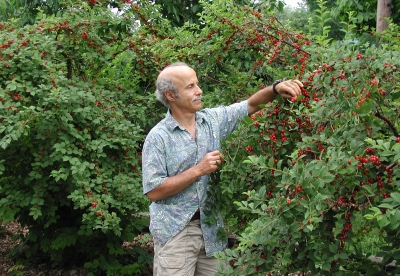
The cherries are small, but are very juicy with a refreshing flavor that combines that of sweet and tart cherries. Another plus for these plants is that they are more or less free of pest problems, requiring no care on my part beyond picking the fruit. Read more about them in my book Landscaping with Fruit.
No need to ignore the bushes until payday because payday is also right now, visually. Along the length of my driveway, the hedge of Nanking cherries has turned into a cloud of dense, slightly pink, white flowers. This time of year it’s not uncommon for a biker or walker to stop and ask the name of the plants. “Nanking cherry!”

Nanking cherry hedge


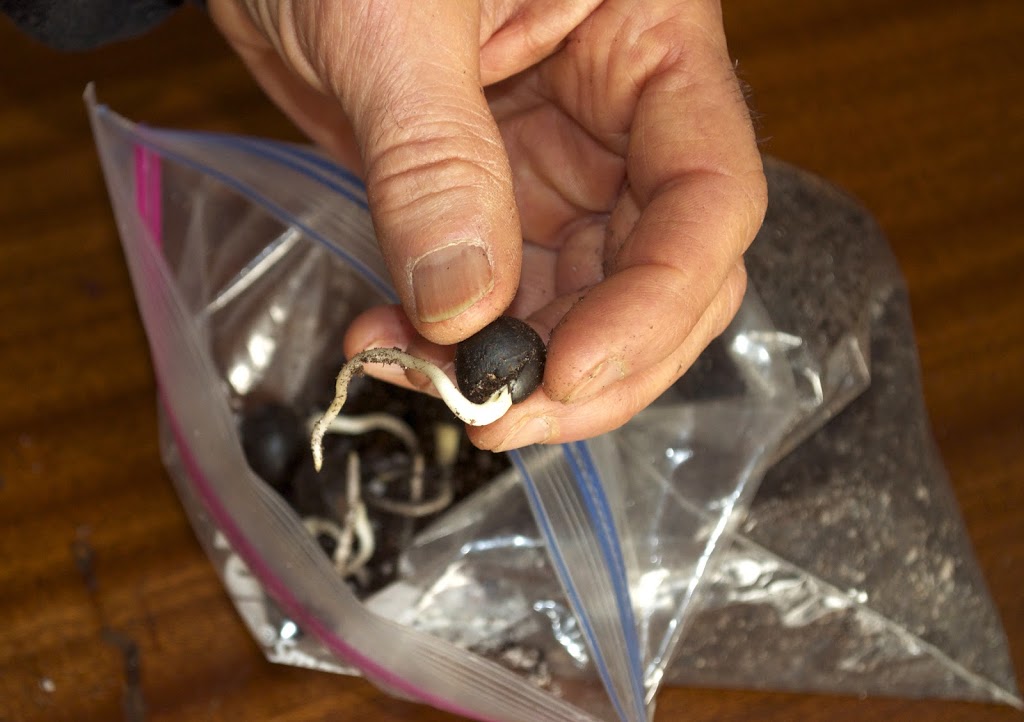
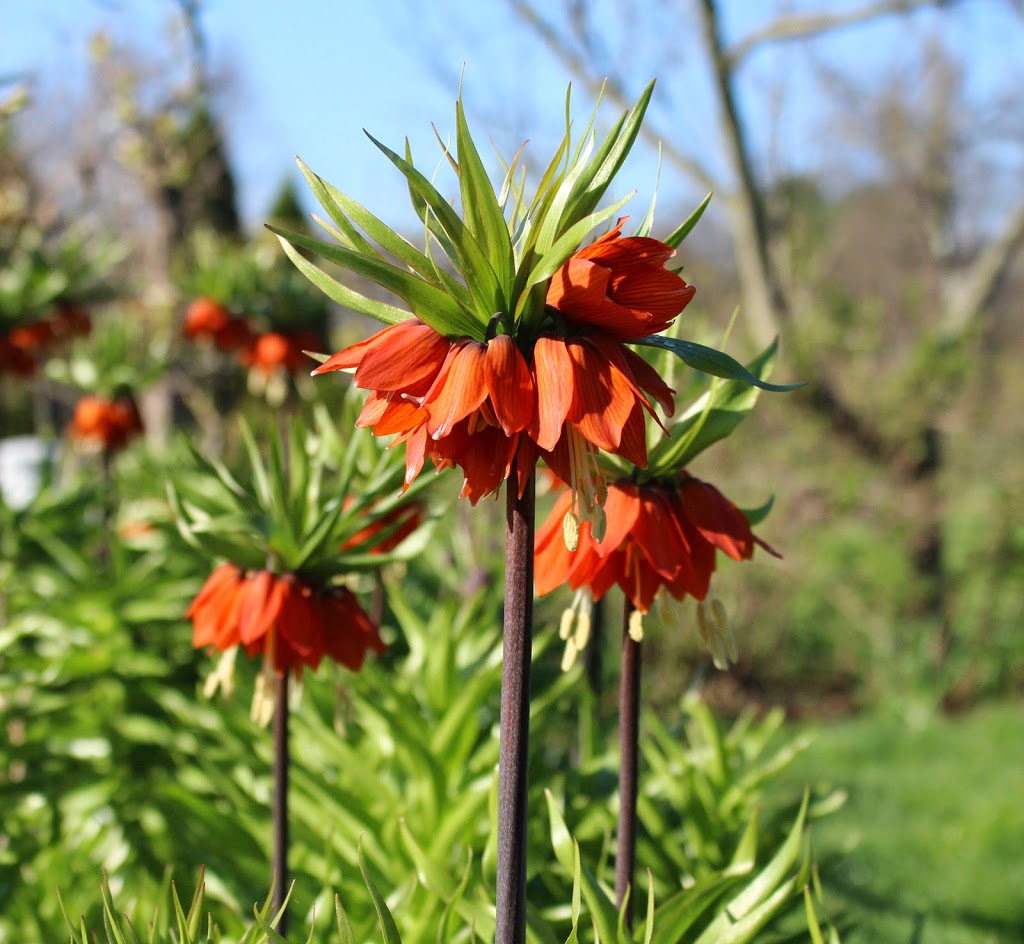
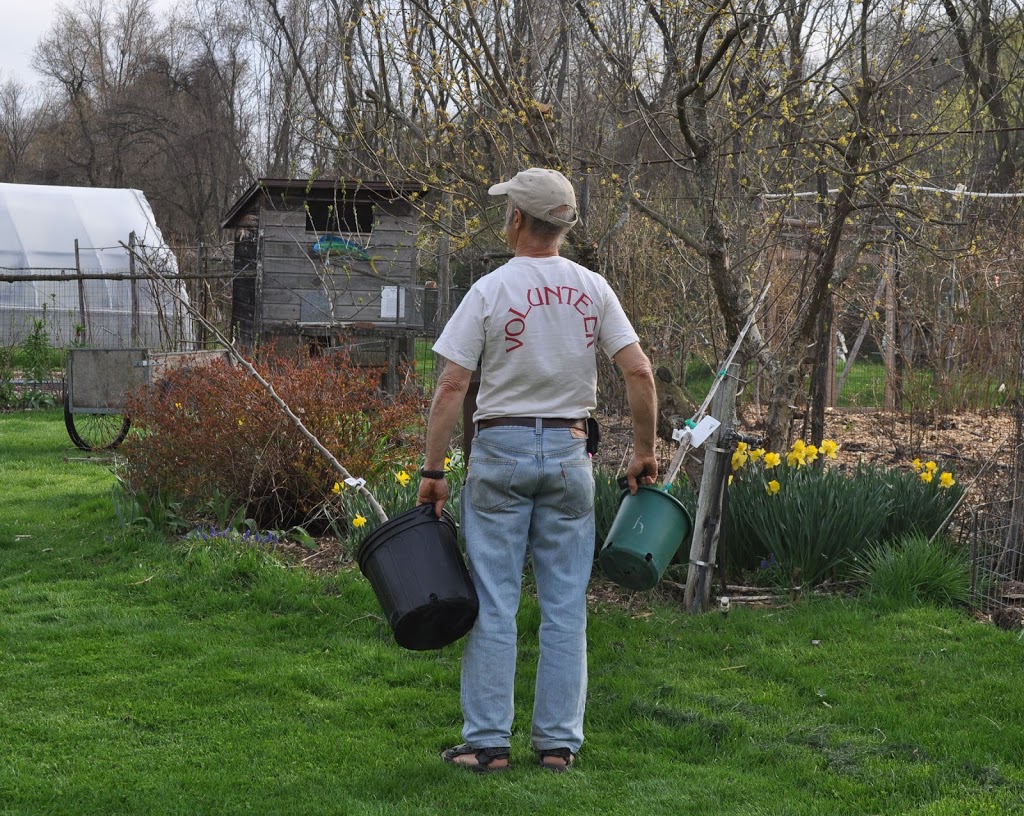
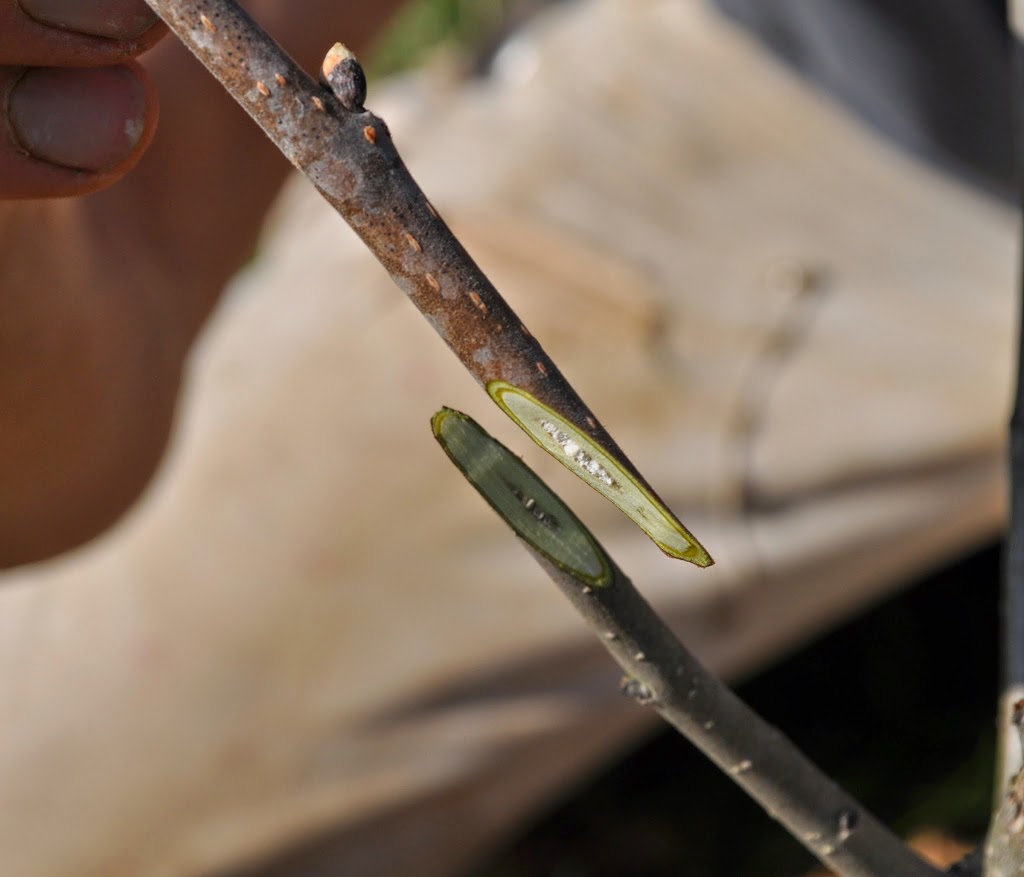

Hi Lee,
Thanks for the insightful post, as always. And good luck with your new pear grafts.
I have a pear question myself: when should I thin the fruit?
My tree in Virginia has just dropped its petals and now has a large number of small fruitlets. Somewhere I read to wait until after the June drop to thin the fruit, presumably on the theory that if you thin before it, the June drop may leave you with too few fruit. But on the other hand, it would seem preferable to thin as early as possible (IE now), to save the tree the wasted energy of developing the extra fruits for another couple of months. Assuming in June the tree can tell that it already has a manageable number of fruits.
What say you?
Thanks and best wishes,
Charlie
Thin some now, and then finish thinning after June drop. Pears can even be thinned way after June drop.
Ok. Thanks!
Hi Lee,
I am looking to purchase a couple of pear trees and “espalier” them. I do not have a wall, but I do have my garden fence that would be perfect for the espalier. Now on the other side of the fence are deers and everyone else, and I am concerned about all of fruiting on the wrong side of the fence. Would that still make sense to pursue in your opinion? Would I lose too many fruit or is there a way to train fruiting on side such as the espalier on a wall?
Thanks!
Alain
Fruit on an espalier grow more or less right on or near the stems, where they would be accessible from both sides.
In China back in the old days they say one could determine the severity of a famine by how high the loss of bark went.
I don’t understand this one at all. Oh, I get it, people eat the bark when times are bad, foodwise. I’ll keep an eye on my trees, their bark.
I just got six Nanking Cherry this year. Hope I can enjoy the tasteful fruit next year. Lee, what cherry pitter do you use for Nanking cherry? I heard the fruit is very tiny and it is hard to do. Thank you.
I’ve never had the patience to pit them or do anything more than mush them down to extract the very delicious juice. People have told me of pittig them with a safety pin.
Thank you, Sir!